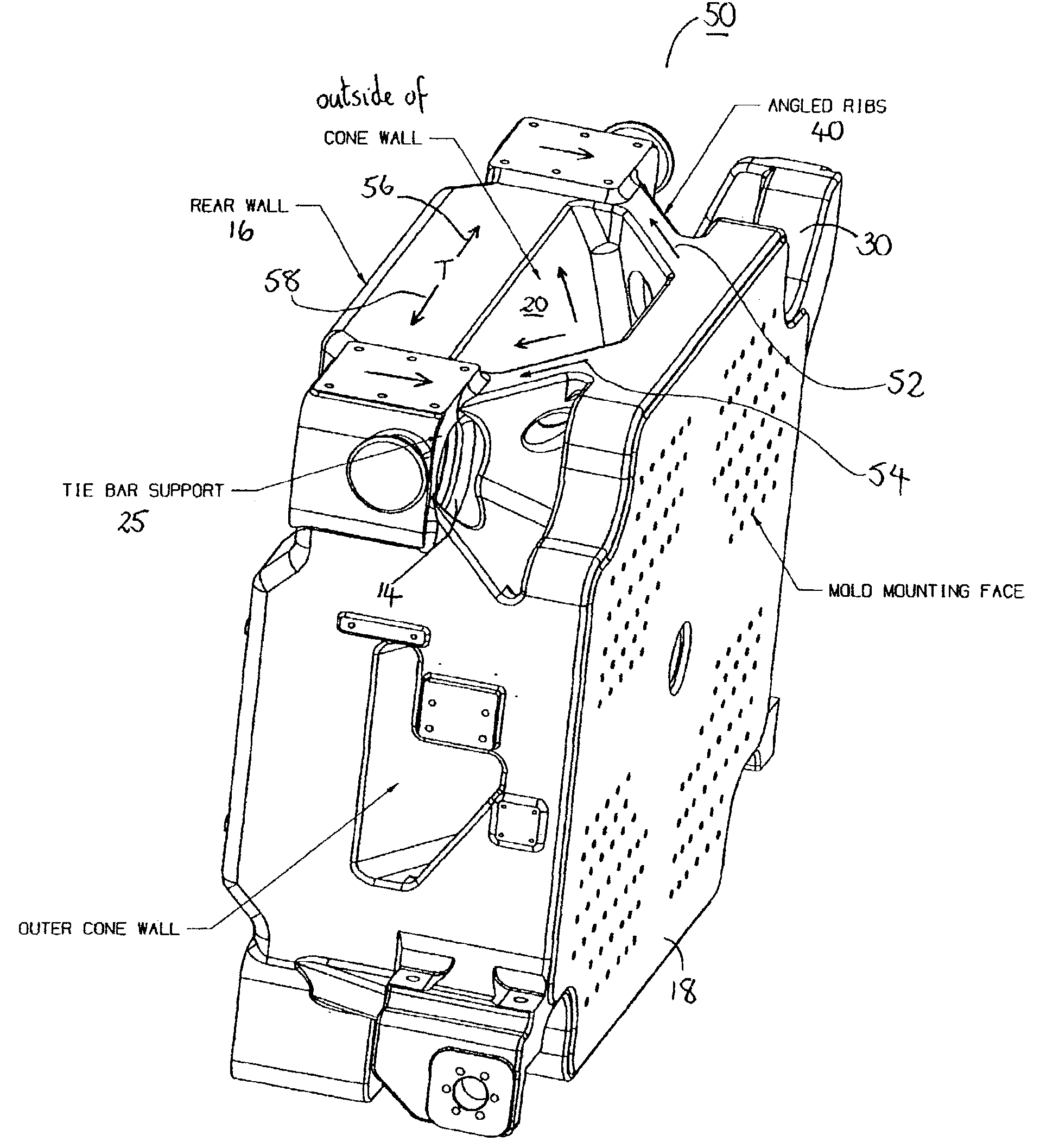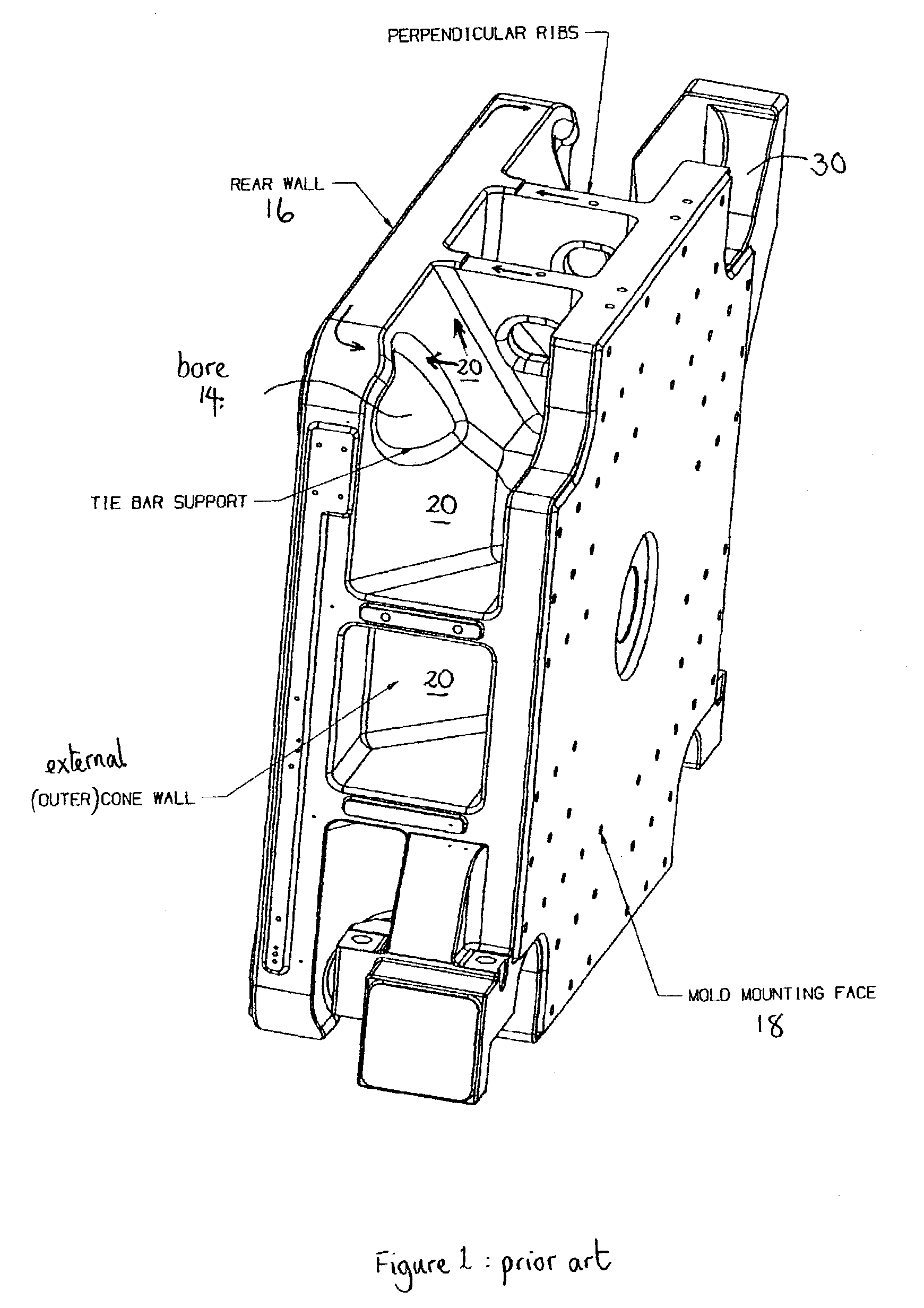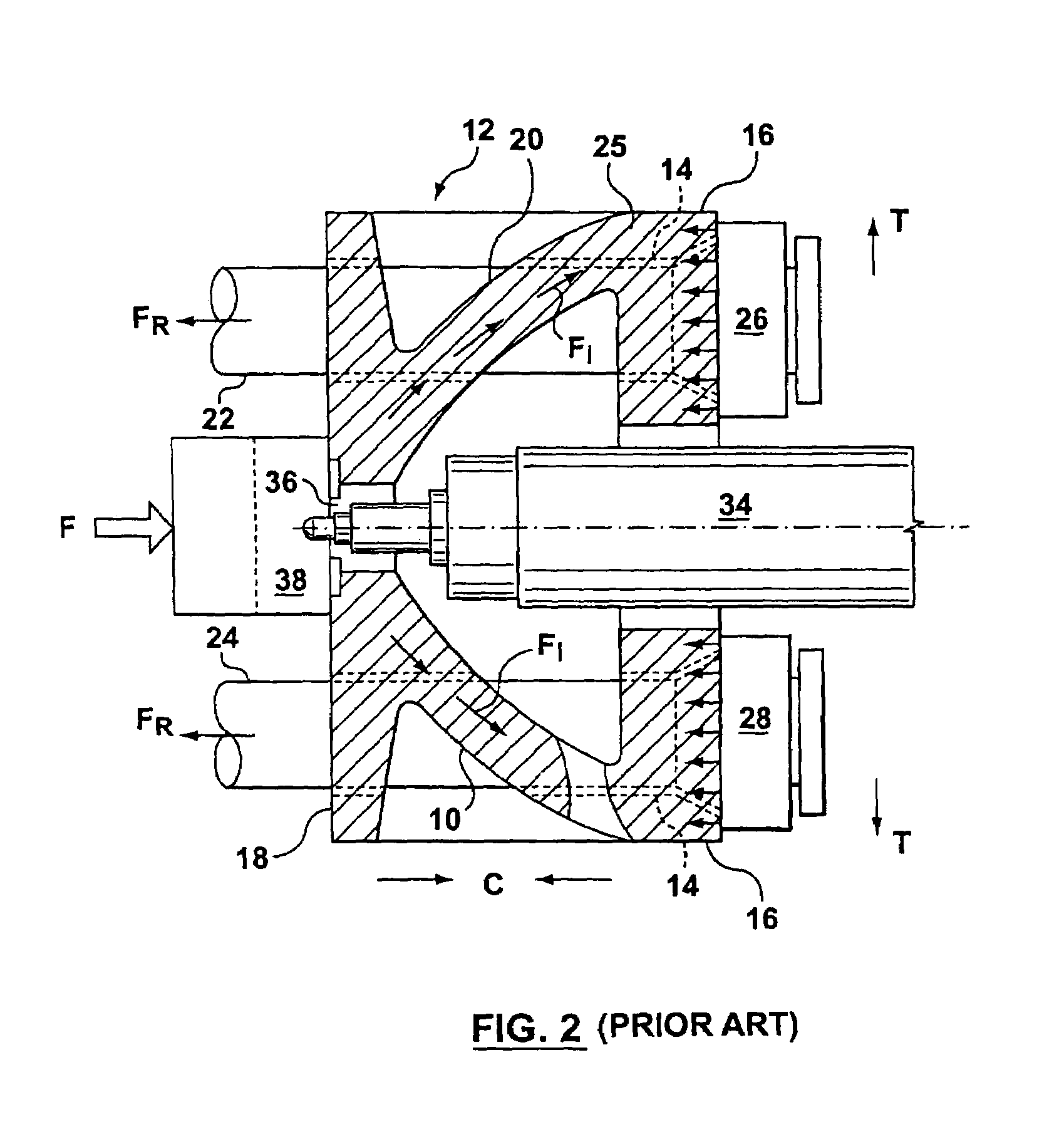Platen
a plate and plate body technology, applied in the field of plate body, can solve the problems of affecting the quality of plate body, and affecting the quality of plate body, and achieve the effect of efficient coupleing of forces
- Summary
- Abstract
- Description
- Claims
- Application Information
AI Technical Summary
Benefits of technology
Problems solved by technology
Method used
Image
Examples
Embodiment Construction
[0034]Referring to the drawings in greater detail, FIG. 2 is a sectional view of a REFLEX® platen 10 shown in the context of a schematic partial representation of an injection molding machine 12. The REFLEX® platen 12 is provided with bores 14 (shown in broken outline) located at the four corners of the rear face 16. A front wall / face 18 of the REFLEX® platen 12 is coupled to the rear wall through an intermediate support structure 20, typically on a generally conical or cone-like construction as taught in U.S. Pat. No. 5,593,711. This intermediate support structure extends substantially from the outer edges of the rear wall 13 towards an inner central portion of the front wall 12, with the intermediate support structure 20 skirting or including the bore 14 for the tie-bars.
[0035]Tie bar pairs 22 and 24 are coupled (or selectively coupled depending on whether the platen is a stationary platen or a moving platen) to the rear wall 16 by tie-bar nuts 26 and 28. The tie-bar nuts can be s...
PUM
| Property | Measurement | Unit |
|---|---|---|
| Angle | aaaaa | aaaaa |
| Angle | aaaaa | aaaaa |
| Angle | aaaaa | aaaaa |
Abstract
Description
Claims
Application Information
 Login to View More
Login to View More - R&D
- Intellectual Property
- Life Sciences
- Materials
- Tech Scout
- Unparalleled Data Quality
- Higher Quality Content
- 60% Fewer Hallucinations
Browse by: Latest US Patents, China's latest patents, Technical Efficacy Thesaurus, Application Domain, Technology Topic, Popular Technical Reports.
© 2025 PatSnap. All rights reserved.Legal|Privacy policy|Modern Slavery Act Transparency Statement|Sitemap|About US| Contact US: help@patsnap.com



